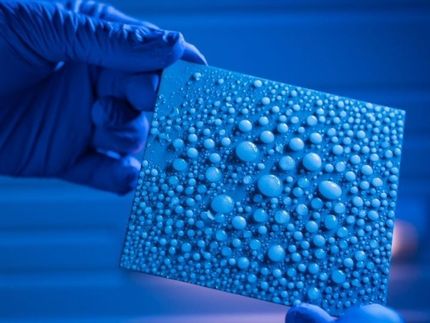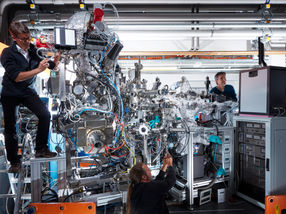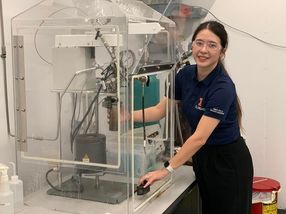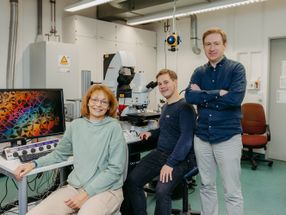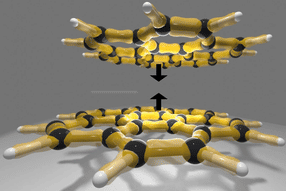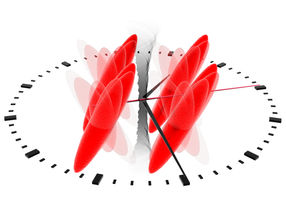Producing Gold nanocrystals with defined geometric shapes
Advertisement
Plato, the greek philosopher (427-347 B.C.E.), believed that matter consists of very small, perfectly regularly shaped particles. The surface of such "platonic solids" is made up of polyhedra of equal size, equal sides, and equal angles. At each corner, an equal number of surfaces come together. For geometric reasons, five such solids are possible (which Plato assigned to the "elements", fire, earth, air, water, and ether). Researchers in Berkeley have now been able to produce gold nanocrystals with shapes reminiscent of four of the platonic solids: tetrahedra (made of four triangles), cubes (made of six squares), octahedra (made of eight triangles), and icosahedra (made of twenty triangles). Like the natural scientists of Plato's age, those of today are fascinated by the beautiful symmetry and incredibly simple structures of the platonic solids. However, growing nanocrystals with these shapes is not just an academic exercise. Their perfect symmetry is ideal for densely packing the particles into highly ordered, two- or three-dimensional structures. This would make accessible novel materials with tailored optical, electronic, or catalytic properties-properties that depend not only on the size, but also the shape of the particles.
The researchers, led by Peidong Yang, start their production of gold nanocrystals with a solution of a gold-containing salt, which is injected into boiling ethylene glycol in the presence of a special surface-active polymer. The ethylene glycol acts as solvent as well as reducing the gold ions to elemental gold. The polymer stabilizes the resulting gold nanoparticles and influences their form. At the initially chosen concentrations, very finely divided, gold particles of uniform dimension form within a few minutes. Under an electron microscope, these look like tetrahedra with flattened corners. If the experiment is carried out at a somewhat lower gold concentration, however, 90% icosahedral gold crystals are formed. The remaining 10% of product contains octahedral particles. The addition of a trace amount of a silver salt to the reaction mixture allowed the researchers to harvest 95% cubic gold nanocrystals.
The formation of the different shapes is dependent on the speed of crystal growth along the different crystallographic axes, which is clearly influenced by the polymer and silver ions, as well as by the concentration gradients during generation of the crystallization nuclei.
Most read news
Other news from the department science

Get the chemical industry in your inbox
By submitting this form you agree that LUMITOS AG will send you the newsletter(s) selected above by email. Your data will not be passed on to third parties. Your data will be stored and processed in accordance with our data protection regulations. LUMITOS may contact you by email for the purpose of advertising or market and opinion surveys. You can revoke your consent at any time without giving reasons to LUMITOS AG, Ernst-Augustin-Str. 2, 12489 Berlin, Germany or by e-mail at revoke@lumitos.com with effect for the future. In addition, each email contains a link to unsubscribe from the corresponding newsletter.



